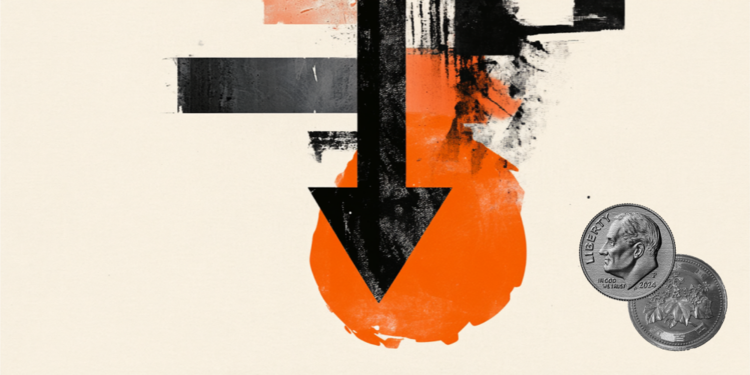- The DXY stands at 104.15 on Friday with slight losses.
- December inflation figures in the US were revised downwards by the SBL.
- Next week the CPI for January will be published.
He US dollar (USD) remained sideways on Friday, with slight losses, closing a winning week but cutting most of its gains. All eyes are on next week's US inflation data.
The US dollar regained ground in the first days of February after Jerome Powell, chairman of the US Federal Reserve (Fed), mentioned that a reduction in interest rates in March seemed unlikely. He stressed the need for more evidence of declining inflation before the Fed could feel confident about lowering rates, so the data release will be key. Next week the Consumer Price Index (CPI) figures for January will be published in the United States, which will probably set the pace of the Dollar in the short term.
Daily Market Summary: Dollar loses some ground after mild CPI revisions
- The US Bureau of Labor Statistics (BLS) updated the Consumer Price Index (CPI) figures with new seasonal adjustments, reducing the December inflation rate to 0.2% from the initial 0.3%.
- The core CPI for December remained stable at 0.3%, without revisions.
- November's CPI was adjusted upward to a 0.2% increase from the previously reported 0.1%, while October's 0.1% rise was unchanged.
- According to CME's FedWatch tool, the chances of a cut in March are low at around 20%, but could see some changes if the US CPI for January turns out to be lower than expected.
Technical Analysis: DXY bulls struggle, continue to battle 100-day SMA
On the daily chart, the Relative Strength Index (RSI) is flat in positive territory, generally suggesting a stagnation in buying momentum, but still maintaining a generally bullish tilt. Together with the Moving Average Convergence Divergence (MACD), which shows flat green bars, it confirms the bullish momentum trend, although hints at a possible consolidation or minor pullback.
On a longer horizon, the simple moving averages (SMAs) paint a mixed picture. The index is trading above the 20-day SMA, a clear sign of near-term bullish strength. However, it remains below the 100-day SMA, indicating that medium-term selling pressure persists. Interestingly, it remains above the 200-day SMA, underscoring a strong long-term bullish presence.
This confluence of factors paints a picture in which the bulls struggle to gain substantial ground, leaving the index vulnerable to further declines if the bulls do not wake up.
Frequently asked questions about central banks
What does a central bank do?
Central banks have a key mandate to ensure price stability in a country or region. Economies constantly face inflation or deflation when the prices of certain goods and services fluctuate. A constant rise in the prices of the same goods means inflation, a constant fall in the prices of the same goods means deflation. It is the central bank's job to keep demand in line by adjusting its interest rate. For the largest central banks, such as the US Federal Reserve (Fed), the European Central Bank (ECB) or the Bank of England (BoE), the mandate is to keep inflation close to 2%.
What does a central bank do when inflation is below or above the expected target?
A central bank has an important tool to raise or lower inflation: modify its reference interest rate. At pre-communicated times, the central bank will issue a statement with its reference interest rate and give additional reasons why it maintains or modifies it (cuts or raises it). Local banks will adjust their savings and loan rates accordingly, which in turn will make it harder or easier for citizens to make a profit on their savings or for companies to borrow and invest in their businesses. When the central bank substantially raises interest rates, we speak of monetary tightening. When you reduce your reference rate, it is called monetary easing.
Who decides monetary policy and interest rates?
A central bank is usually politically independent. Members of the central bank's policy council go through a series of panels and hearings before being appointed to a position on the policy council. Each member of that council usually has a certain conviction about how the central bank should control inflation and the subsequent monetary policy. Members who want a very loose monetary policy, with low rates and cheap loans, to substantially boost the economy, while settling for inflation slightly above 2%, are called “doves.” Members who prefer higher rates to reward savings and want to control inflation at all times are called “hawks” and will not rest until inflation is at 2% or just below.
Is there a president or head of a central bank?
Typically, there is a chairperson who leads each meeting, has to create a consensus among the hawks or doves, and has the final say when votes need to be divided to avoid a 50-50 tie on whether to adjust current policy. The president will give speeches, which can often be followed live, in which he will communicate the current monetary stance and outlook. A central bank will try to push its monetary policy forward without causing wild swings in rates, stocks, or its currency. All central bank members will channel their stance toward markets ahead of a monetary policy meeting. A few days before a monetary policy meeting is held and until the new policy has been communicated, members are prohibited from speaking publicly. This is what is called the silent period.
Source: Fx Street
I am Joshua Winder, a senior-level journalist and editor at World Stock Market. I specialize in covering news related to the stock market and economic trends. With more than 8 years of experience in this field, I have become an expert in financial reporting.







